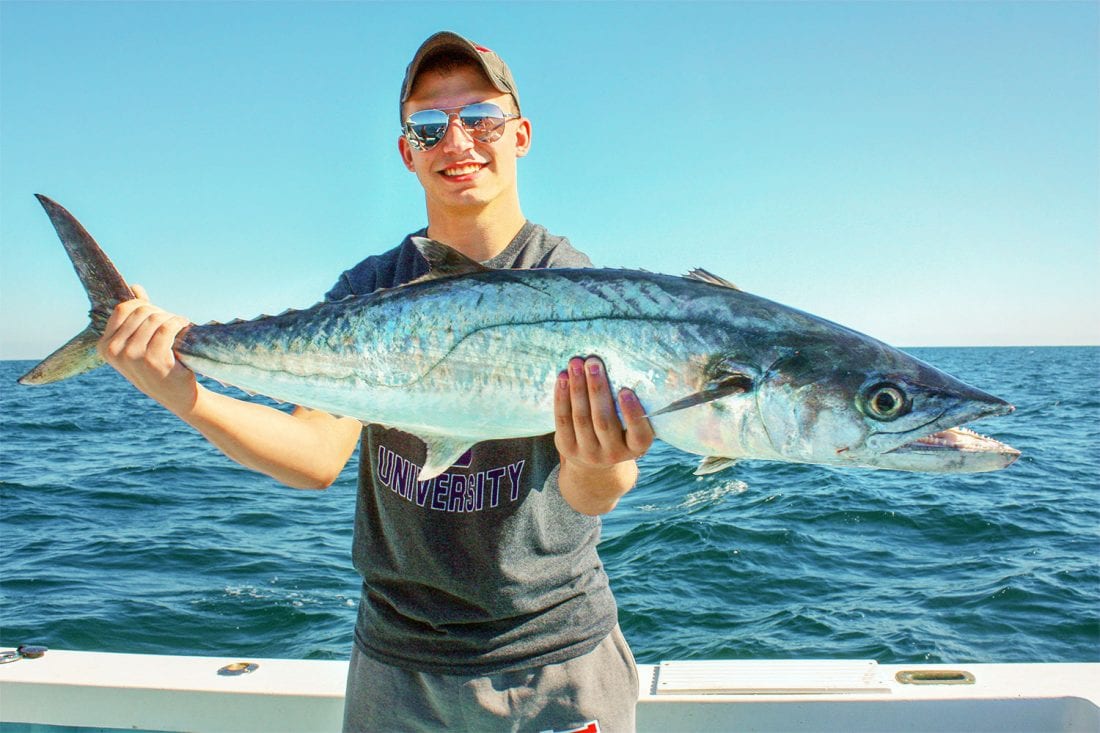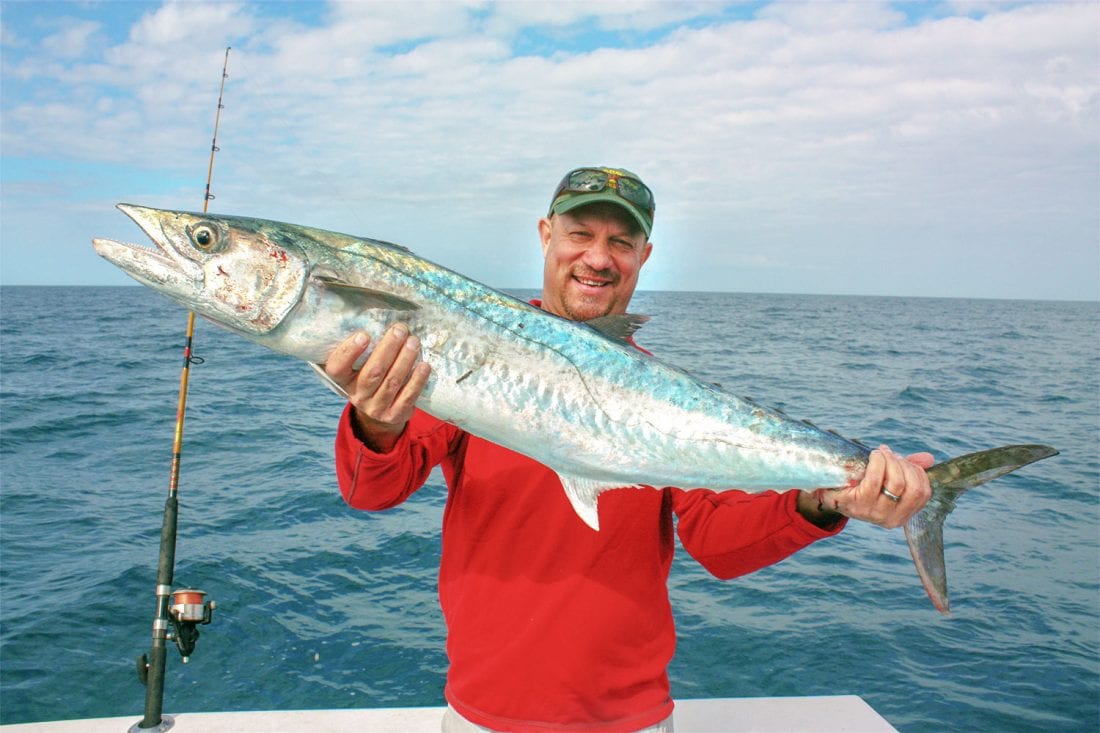Water temperatures are falling. King mackerel are on the move. Wherever they roam, fall is the time to catch kingfish during their annual migration south.
In the Atlantic, from the Carolinas south along the Florida coast, kings are following bait to warmer waters. The same thing is going on in the Gulf of Mexico. Kingfish that summered in the northern Gulf are splitting up. Some head west down the Texas coast. Others move east along the Panhandle and down the west coast of Florida.
Wherever you fish, the next few months offer the opportunity to connect with the movements of these mercury missiles as they mingle with resident populations. The prospect for drag-burning runs is out there for anglers who pay close attention to water temperatures and stay on the move until they find the fish.
King mackerel are as temperature driven as any fish in the sea. When they’re marauding baitfish, they can be found close to shore on the beaches, passes and jetties, where even shore-bound anglers have a shot at them. But most of the larger kingfish hunt over nearshore reefs in 30- to 60-feet or deeper. Deep or shallow, they’ll seek out 68- to 73-degree temperatures where they are comfortable. Watch the water temperature charts, and fish by them. Find the right temperature and an abundance of baitfish, and putting out a spread of baits will tell you quickly if there are king mackerel around.
Live bait is always the best bet, especially for big smokers. The best bait will depend on where you fish and what baitfish are most prevalent. Pogies (menhaden), hardtails (blue runners), pilchards and threadfin herring are all good baits if they are present. The fall mullet runs offer an abundance of good bait. A lot of tournament and charter boats put a Spanish mackerel in a spread looking for a big bite. Most importantly, baitfish should be fresh. Catch the bait that is available with Sabikis or cast nets, keep it well-oxygenated and switch them frequently.
King Mackerel Rigs
Most king mackerel rigs will use a mainline of 20- to 30-pound monofilament. Obviously, with those teeth, a wire leader is essential. You should go as heavy as the fish will let you get away with—depending on water clarity—but it must remain light enough for the bait to swim. A 24-inch, single-strand wire leader of 40-pound test is a starting point. Go lighter in clear water or with smaller baits; go heavier in dirty water or if you’re fishing big baits for big fish. Leaders can be made longer for security. Hooks should be matched to the size of the bait, and it’s wise to add a stinger hook on large baits.
Whether anchored, drifting or slow-trolling, a fresh chum slick is a good idea. If a king doesn’t hit within 15 or 20 minutes, pick up and go find some that are biting. They shouldn’t be hard to find this time of year.

